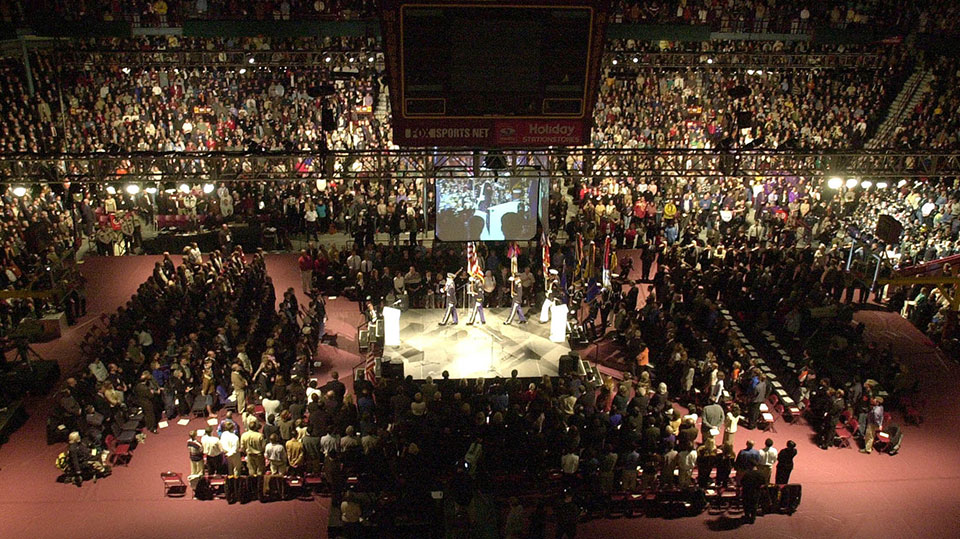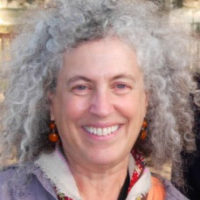
Iron Range retirees had not even had time to uncramp their legs after their three-hour ride home from the historic memorial for Sen. Paul Wellstone and those who so tragically died with him. Williams Arena in Minneapolis was still reverberating from the tears, the cheers and the fighting spirit of this common folks’ tribute to a fallen leader, his wife and life-partner Sheila – a leader in her own right, their daughter Marcia, three campaign aides and two crew members.
Suddenly a whine spread over the airwaves and into newspaper columns: some people were shocked! yes, shocked and outraged! that the Wellstone memorial was political! – it just wasn’t nice!
Now, I’ve been to a few memorials. Those that are meaningful not only mourn, but draw lessons from the life of the person who has died, and give the bereaved, their families and friends a reason to go forward, to carry on the spirit of the departed. I remember my father’s memorial. We mourned his death, but it was also appropriate, and important for my brother and me, to talk about the essence of his life that we wanted our children and all those gathered at the memorial to carry on: his devotion and loyalty to his family and to social justice and socialism, and his modest, unassuming courage in standing up to the ultra-rightists of his day.
If we had not done this, it would have betrayed my father. It would have denied who he was. And it would have destroyed the rich legacy that he left for those who came after him. And that’s just exactly what the Bush-Cheney-Rove-Lott ultra-right want to do to Paul Wellstone. Crying crocodile tears for Wellstone, they want to bury who he was and destroy his legacy. They want to bury the Wellstone movement.
It’s interesting to recall that, when Abraham Lincoln was invited to make ‘a few appropriate remarks’ at a memorial, he used the opportunity to issue a rallying call to the nation to fight for the causes for which the departed had died. The year was 1863, and the place was Gettysburg.
‘It is for us the living,’ he said, ‘to be dedicated here to the unfinished work’ of those who died, ‘to the great task remaining before us – that from these honored dead we take increased devotion to that cause for which they gave the last full measure of devotion – that we here highly resolve that these dead shall not have died in vain.’
We must carry on their fight, Lincoln declared, for ‘a new birth of freedom,’ and to ensure that ‘government of the people, by the people, for the people shall not perish from the earth.’ His words have echoed down through the ages. No one considers them ‘inappropriate’ or ‘politicizing a memorial.’
Paul Wellstone’s cause was government of the people, by the people, for the people. As I looked around Williams Arena the evening of Oct. 29, I saw the face of the real America. Ordinary faces – the kind of people you see on the street every day. Men and women who work hard and know about the struggles of daily life, about the importance of family and community, about sticking together and fighting for what’s right. They were moved to come in the tens of thousands because Wellstone, known as ‘labor’s senator,’ stood up for the ‘common people.’ His vote opposing the Iraq war resolution, just weeks before his death, near the close of a tight election campaign, was perhaps a defining act, embodying the qualities they admired in him, whether or not they agreed with his position: he cared about the working people who pay the price for war, he put principle above polls and career, he was a fighter.
When Sen. Tom Harkin, Wellstone’s friend Rick Kahn, and sons David and Mark Wellstone called on the crowd to ‘Stand up, keep fighting,’ ‘Organize, organize, organize,’ and ‘Win the election for Paul!’ they were paying the most appropriate tribute to Paul and Sheila Wellstone and the others who died in the heat of a battle to defeat the ultra-right, and 20,000 Minnesotans, along with national political figures in the audience, cheered, stomped their feet and pumped their fists in response.
So who exactly was shocked and outraged? Trent Lott and Jesse Ventura, who were booed by many in the crowd. Karl Rove and his Republican Party operatives, who were pissed that the faces and fighting spirit of this potent grassroots movement got broadcast all around the country just a week before the elections.
It’s curious how this complaint suddenly popped up simultaneously in media across the country. It turns out a key player was Vin Weber, a member of the Coleman campaign inner circle. Weber, a former Minnesota Republican congressman closely tied to Newt Gingrich, is a top ultra-right Washington lobbyist and policy consultant, and chairs the notorious National Endowment for Democracy.
I hope reporters dig into the orchestration of this vicious campaign to divide and silence the growing movement for political, economic and social justice and democracy, for government of, by and for the people.

MOST POPULAR TODAY

High Court essentially bans demonstrations, freedom of assembly in Deep South

Resource wars rage in eastern Congo, but U.S. capitalism only sees investment opportunity

U.S. imperialism’s ‘ironclad’ support for Israel increases fascist danger at home

Zionist organizations leading campaign to stop ceasefire resolutions in D.C. area

UN warns that Israel is still blocking humanitarian aid to Gaza



Comments